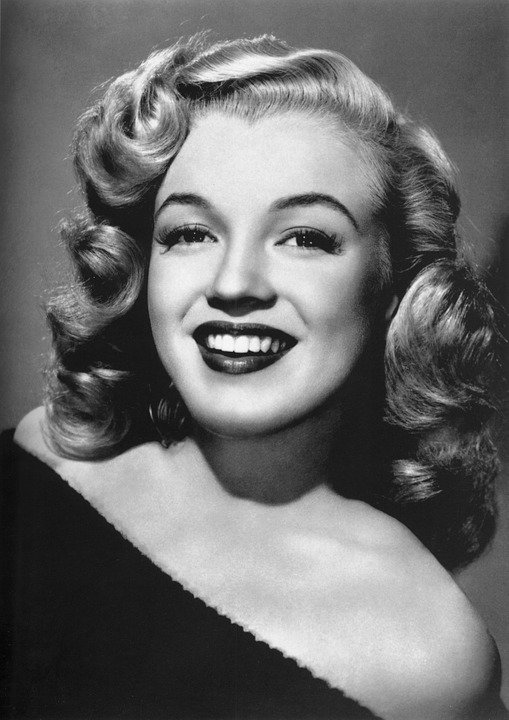Marilyn Monroe’s childhood and early life
Only a few people, perhaps her colleagues, friends, family, and fans, knew her real name, Norma Jeane Mortenson. Marilyn Monroe was undeniably one of American showbiz’s most beautiful faces and starred in many commercially successful motion pictures during the 1950s. She also became a prominent sex symbol during her time.
Marilyn Monroe was born on June 1, 1926, in Los Angeles, California, the U.S. Her mother, Gladys, had suffered from mental illness that deprived her of personally taking care of her daughter, Norma (Manilyn Monroe). She had to be frequently confined in an asylum, so Norma’s childhood was spent in and out of foster homes. She was reared by 12 successive sets of foster parents and, for a time, in an orphanage.
In 1942 when she was only 16, Norma married James Dougherty, her fellow worker in an aircraft factory. Dougherty joined the military, and they divorced soon after World War II. Norma went to work at a defense plant as well as working as a model.
Modeling and first film roles
In 1945, Norma became a famous photographer’s model after she signed with the Blue Book Model Agency. Her signature short blonde hair began appearing in magazine ads and covers. Her modeling salary had a little portion to buy books as she was a passionate reader. Besides taking literature courses, she took an acting course at the Actors Lab in Hollywood.
Norma met an executive at the 20th Century Fox, Ben Lyon, who convinced Darryl F. Zanuck, to sign her to a six-month contract. Lyon then gave her a screen name Marilyn Monroe. She briefly appeared in movies made by the Fox and Columbia studios portraying as a waitress in the movie Dangerous Years in 1947. However, Zanuck was not particularly impressed with Monroe’s acting talent, so he let her contract lapse a year later. Norma became unemployed and decided to return to modeling for photographers. Her very daring and captivating nude photograph on a calendar brought her a role in the film Scudda-Hoo! Scudda-Hay! (1948), which was followed by other minor roles.
In 1950 Monroe had a minor uncredited role in The Asphalt Jungle and had gained much fan mail. She won another contract from Fox after her appearance in All About Eve (1950) and gained much recognition. Monroe accomplished movies after movies: Let’s Make It Legal, and Love Nest (1951), Clash by Night (1952), Niagara, and Gentlemen Prefer Blondes (1953), and There’s No Business Like Show Business (1954). Her fame grew steadily and spread globally, and she became the object of unparalleled widespread adulation.
Marriages
Monroe’s marriage in 1954 with baseball legend Joe DiMaggio lasted only less than a year as DiMaggio wanted a full-time wife, but Marilyn pursued her acting career. Her sex symbol image and attention from other men also became an issue with him.
She had showcased her talent in comedy films like The Seven Year Itch (1955) and Bus Stop (1956). After her marriage with playwright Arthur Miller in 1956, she briefly retired from moviemaking. With her performance in Some Like It Hot (1959), she received a critical commendation being a serious actress for the first time. The Misfits (1961), where she played her last role, was written by Miller.
TV appearances and Advertisements
Despite her numerous movie roles, Monroe was less known for television work. She starred in a very few TV shows and much fewer TV commercials. In 1953, despite disliking the unpredictable live TV appearances, she made it to the “Jack Benny Show.”
Only a few would have recalled that Marilyn Monroe appeared in a TV commercial in 1950. It was for Royal Triton Oil. Marilyn’s car ran out of gas, and with some strong and adoring men’s help, she rolled into a gas station. With her signature breathy voice, she asked the gas attendant to fill her car, “Cynthia,” with Royal Triton.
The Royal Triton advertisement, where Monroe starred, may have been one of the few TV commercials that she had in her lifetime. Still, she’s certainly made an impact on television and advertising.
A “probable suicide” had conspiracy theories about Monroe’s death as she overdosed on sleeping pills in her Los Angeles home.
Despite her tragic passing in 1962, her status as a Hollywood icon endures. Marilyn Monroe’s face, hair, voice, and work continue to be recreated in pop culture.

